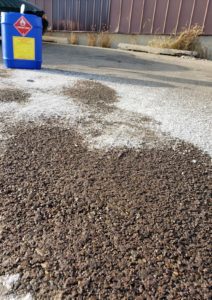If you are a Small Quantity Generator (SQG) of hazardous waste, you may be aware of the regulations at 40 CFR 262.34(d)(4) that require you – along with large quantity generators and treatment storage and disposal facilities – to comply with the Emergency Preparedness and Prevention regulations of 40 CFR 265, Subpart C. You may not be aware of the requirements of 40 CFR 262.34(d)(5) for emergency procedures which apply solely to SQGs. These regulations are sometimes referred to as an SQG’s “Basic Plan”. They include the following:
|
Not sure of your hazardous waste generator status? Take this short survey |
- At all times there must be at least one employee either on the premises or on call (i.e., available to respond to an emergency by reaching the facility within a short period of time) with the responsibility for coordinating all emergency response measures. This employee is the emergency coordinator.
- §262.34(d)(5)(iii) requires an SQG to “ensure that all employees are thoroughly familiar with proper waste handling and emergency procedures, relevant to their responsibilities during normal facility operations and emergencies”. This is typically interpreted to mean some kind of training.
- The following information must be posted next to any telephone that may be used in a hazardous waste fire, spill, or emergency:
-
- The name and telephone number of the emergency coordinator;
- Location of fire extinguishers and spill control material, and, if present, fire alarm; and
- The telephone number of the fire department, unless the facility has a direct alarm.

- Fire: Call the fire department or attempt to extinguish it using a fire extinguisher.
- Spill: Contain the flow as much as possible and, as soon as practicable, clean up the waste and any contaminated materials or soil.
- Threaten human health outside the facility or spill to surface waters: Immediately notify the National Response Center (800.424.8802) and report the following information:
- The name, address, and U.S. EPA Identification Number of the generator;
- Date, time, and type of incident (e.g., spill or fire);
- Quantity and type of hazardous waste involved in the incident;
- Extent of injuries, if any; and
- Estimated quantity and disposition of recovered materials, if any.
Being a Small Quantity Generator of hazardous waste does not relieve you entirely of the burden of regulatory compliance. Make certain that you are in compliance with all the regulations applicable to SQGs.
Q: Does any of this have to be contained within a document such as a Basic Plan?
A: No. Though the term Basic Plan is sometimes used when referring to these regulations, there is no requirement in the USEPA regulations to contain this information in a plan or any other document. Some states, however, may have more strict regulations and may require a plan or some other similar document in addition to these federal regulations.
|
Contact me with any questions you may have about the generation, identification, management, and disposal of hazardous waste Daniels Training Services, Inc. 815.821.1550 |